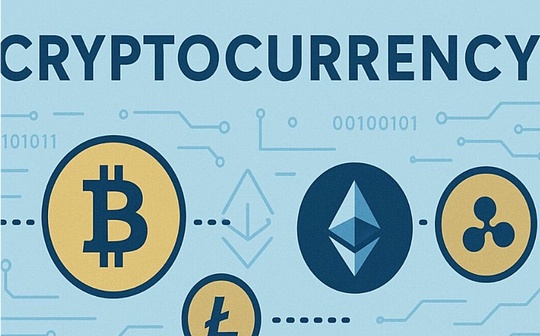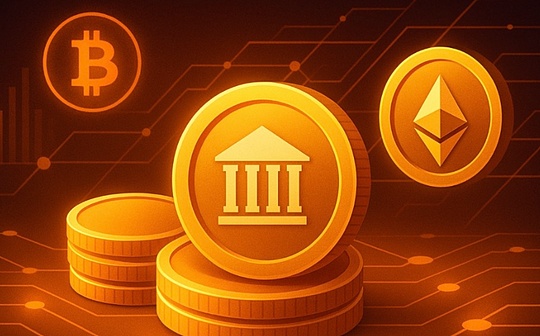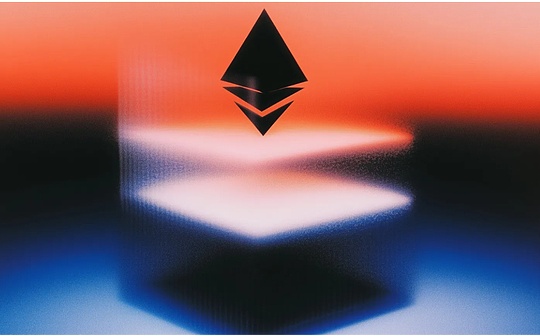
Author: Bradley Peak, Source: Cointelegraph, Compiler: Shaw Bitcoin Vision
1. Bitcoin is not a “cryptocurrency”
A tweet from Jack Dorsey has reignited an old question: Is Bitcoin a part of “cryptocurrencies” or is it a category of its own?
On October 19, 2025, Jack Dorsey posted three words on the X platform: “Bitcoin is not a cryptocurrency.” This post quickly attracted attention on the platform and in media reports.This reflects his long-held view that Bitcoin should be considered a currency with its own rules and history and should not be subsumed into the broader token market.
Dorsey believes that Bitcoin should be in its own category.When it was born, there was no foundation or pre-mining, and its governance was relatively conservative.The Bitcoin network was designed with payments and savings in mind, unlike smart contract platforms and application tokens that are rapidly evolving to serve multiple use cases.
Let’s analyze this argument.
To understand why, it’s necessary to understand how Bitcoin’s design, governance, and regulation differ from the rest of the cryptocurrency world.
2. Monetary policy and issuance: fixed rules and flexible policies
Bitcoin issuance follows a fixed schedule starting with supply, whereas most other networks treat supply as an adjustable function.
Bitcoins are issued in the form of block rewards, which are halved approximately every 210,000 blocks until the total supply reaches 21 million BTC.The fourth halving occurs in April 2024, when the block height reaches 840,000, and the reward drops from 6.25 BTC to 3.125 BTC.Each halving makes miners rely more on transaction fees and less on newly issued Bitcoins.
Changing the issuance of Bitcoin requires overwhelming social consensus among users running nodes, allowing investors to predict supply years in advance.This predictability remains a core part of its “store of value” appeal.
Most other networks treat monetary policy as a design choice.Take Ethereum as an example: Ethereum Improvement Proposal (EIP) 1559 introduced a base fee burning mechanism to reduce the net issuance when demand is high; the merge update moved the network to a proof-of-stake (PoS) mechanism, thereby reducing the total issuance.Together, these changes create a supply model that dynamically adjusts based on network activity.
This flexibility enhances the user experience and enables new features, while Bitcoin’s rigidity is designed to maintain the credibility of the currency.
3. Consensus and Security Budget: PoW Minimalism vs. PoS Upgrade Speed
How the blockchain secures itself will determine everything that follows.Bitcoin exchanges work for security, while the PoS system ensures security through equity.
On the Bitcoin network, miners use energy to add blocks, and full nodes enforce a small and conservative set of rules.Its scripting language is deliberately simple and not Turing-complete.The fewer components there are, the less likely they are to fail, which is why changes to the base layer are extremely rare and strictly restricted.
As block rewards continue to be halved, miners’ income gradually shifts from new coin issuance to transaction fees – Bitcoin’s long-term “security budget.”This raises some important future questions, such as how incentives will be maintained during periods of low fees.It also shows that the surge in activity driving fee increases, as well as the stable use of layers like the Lightning Network, is critical to miner economics.
Many crypto platforms, especially Ethereum, use a PoS mechanism.Validators lock ETH, earn rewards for proposing and proving blocks, and may be punished for misconduct.This model makes upgrades faster: the Merge upgrade in 2022 switches to PoS, Shapella in 2023 allows withdrawals, and EIP-4844 in 2024 reduces the data cost of rollup.
Bitcoin prioritizes security, stability, and minimal changes to its underlying layer, while most PoS networks emphasize faster upgrades and higher throughput.
4. Governance and culture: “rigidity and optimization” in practice
Who will change the rules, how quickly, and how to ensure safety?Bitcoin was designed to evolve slowly, while application-focused blockchains focus more on speed and flexibility.
Bitcoin is designed to evolve slowly.Proposals initially emerged as Bitcoin Improvement Proposals, which were publicly discussed and only moved forward if there was widespread support from developers, miners, and node operators.There are no on-chain votes or foundations to lead decisions.Upgrades are usually rolled out as soft forks to maintain compatibility with older nodes.
In 2021, the Taproot upgrade adopted a “rapid trial” signaling mechanism, reaching a lock in June and activated on November 14, 2021 at block 709632.This lengthy process gives developers, miners, and node operators time to coordinate, reducing activation risk.This rhythm (less change, more discussion) is a reflection of what people call Bitcoin’s “rigidity.”
Smart contract platforms take the opposite approach.Ethereum introduces changes through the EIP process, following a stable release cycle – for example, post-merger withdrawals and prototype Danks sharding to reduce data costs.
Different goals, different rhythms: Bitcoin maintains the credibility of the currency through conservative revisions, while application-focused blockchains focus on launching new features and keeping developers active.
5. Running on Top: Payment Apps vs. Universal Apps
Bitcoin keeps the base layer simple: unused transaction output (UTXO) accounting, limited stack-based scripting (intentionally not Turing-complete), and other logic that is relatively simple.
Much of Bitcoin’s payment activity is moving to second-layer networks like the Lightning Network.It uses two-way channels and hash time-locked contracts (HTLC) to enable instant, low-fee payments without changing the underlying rules.Daily transactions occur off-chain, while settlement remains anchored on the main network.
Smart contract platforms take the opposite approach.Ethereum supports rich, stateful contracts on its Layer 1 and encourages composability—decentralized finance (DeFi), non-fungible tokens (NFTs), and on-chain games layered on top of each other.This approach speeds up experimentation but relies on a base layer that is flexible and regularly upgraded.
Bitcoin is still being explored on the fringes.Ordinals and Runes, launched around 2024 around the halving, will push fees to all-time highs, increase miner revenue, and provide a reality test for fee-driven security.Crucially, none of this changes Bitcoin’s monetary rules or minimalist underlying design.The pattern remains valid: keep the base stable and let new activities build on it or run parallel to it.
6. Market Structure and Its Implications: Separate Categories of Bitcoin
Exchange-traded fund (ETF), options and money flow data suggest that institutions are treating Bitcoin differently than the rest of the cryptocurrency market.
On January 10, 2024, the U.S. Securities and Exchange Commission (SEC) approved a rule change allowing exchanges to list and trade spot Bitcoin exchange-traded products (ETPs).This decision brings Bitcoin into mainstream markets, including the New York Stock Exchange (NYSE), Arca, Nasdaq, and the Chicago Board Options Exchange (Cboe).
These are the platforms used by broker-dealers, registered investment advisers (RIAs) and pension funds.No matter what you call the asset class, retirement and wealth management platforms are now carving out an exclusive lane for Bitcoin.
The market infrastructure thus expanded.By the end of 2024, U.S. regulators approved spot Bitcoin ETF options, and the Chicago Board Options Exchange (Cboe) also launched index options linked to a basket of Bitcoin funds.In short, it leverages tools already familiar to institutions for risk transfer and price discovery – something that most tokens still lack.
Fund flow data clearly illustrate this shift.During 2024 and 2025, new fund subscriptions and redemptions have become routine activity, with dashboards tracking assets and net flows.Investors invest in Bitcoin through traditional channels rather than cryptocurrency-native platforms.
Policy signals point in the same direction.U.S. derivatives regulators have long classified Bitcoin as a commodity.In 2025, staff of the U.S. Securities and Exchange Commission and the Commodity Futures Trading Commission (CFTC) noted that registered exchanges could facilitate trading of certain spot commodity crypto products.
Taken together, distribution channels, hedging tools, capital flow reports and regulatory labels all provide strong support for Jack’s argument that Bitcoin is not a cryptocurrency.The market has already classified it into different categories.






